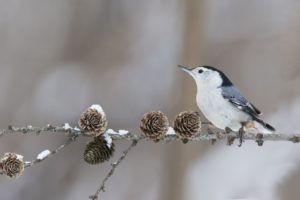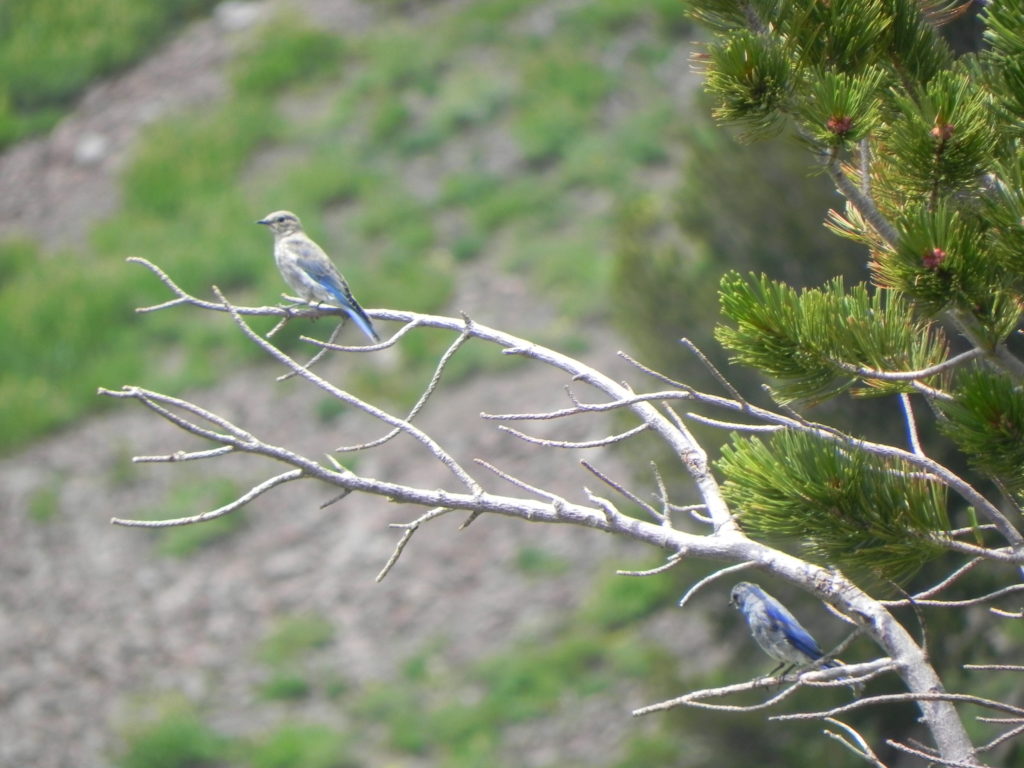By Heidi Lasher
After decades of contentedly snubbing both casual and serious bird watchers, I have recently felt an obligation to know birds. A grown adult should be able to distinguish sparrow from swallow and nuthatch from wren. I guess I’d begun to feel alone in my ornithological ignorance. Where birding was once the domain of the aged and uncool, it seems that birding is now cool. And I, it seems, am now aged.
It’s true; I could have lived out my days in birding ignorance. There is no universal obligation to know the names of birds. There are plenty of non-birders out there. But I couldn’t help wondering if there was something wrong with me, some page missing in my book, some memo I failed to read. Maybe bird watching was a natural stage in human development that I was unable to attain.
Coaching myself to begin somewhere, I sat on my porch, necklaced in binoculars, clutching “The Sibley Guide to Birds.” Training my eyes past the robins hunting on the lawn, I sought out the forgettable types: dull, fist-sized, and fidgety. They fluttered about, but I could not get a good look at them. The light conspired against me, casting shadows on their breasts and turning blues to blacks. Their size shrunk with distance and grew in flight. I sat and watched birds come and go, whole categories and types of birds that narrowed into species and sub-species, specific patterns for males and females, juveniles and adults. Perched there, I felt small and stupid. So many birds, so little time.

Birding brings up a familiar feeling of resistance that I associate with a lack of personal agency. It’s that response to failure that makes you throw your hands in the air and exclaim how you cannot do everything. I cannot keep up with the news. Nor can I remember which personal hygiene products are laced with harmful chemicals. I can bring cloth bags to the grocery store, but I cannot prevent that tidal wave of slim plastic bags, so readily issued, from killing gulls. My hand-wringing will not prevent climate change, will not bring the salmon back into my river, will not keep winter snow from melting to rain. I have entered a new season of life, and I am alarmed by my lack of courage. There are so many things I cannot do.
So, I download the Audubon app. The app tells me the red-breasted nuthatch lives in coniferous forests across the whole of North America. It keeps its head down and sings “a tinny yank-yank.” The nuthatch, says Audubon, may be “overlooked until it wanders down the tree toward the ground.”
Reading the description, it occurred to me that I’d seen a nuthatch before. I saw one in the spring, hopping down the side of a fir tree near Waikiki Springs. I had paused to look at it. In retrospect, this sighting felt like progress. I was momentarily elated.
Days later a bird sang outside the window of my bedroom. It woke me and I imagined it to be a rare songbird migrating across the state. I turned to my husband and asked, full of wonder, if he heard the songbird, too. Yes, he told me. It’s a robin.
A robin.
A small crisis erupted in my mind. Had I never given my full attention to the song of robin? One of the few birds that actually stands still in my yard as it tugs worms from the soil? If I had never heard a robin sing, what else had I missed?
It dawned on me, then, that I had been missing a lot of the world around me. Only recently have I begun to listen with new ears, see with new eyes, both captivated by my sense of wonder and confused by it. Why birds and trees and rivers, and why now? What took me so long to see these things? The change in me feels surprising. What else am I capable of learning?
My progress as a birder is sluggish. I am a better botanist, a fact that confounds me, since I find botany even more tedious than ornithology. But I’m coming around to birds. I’m starting to see and hear them with more interest and less baggage.
I shooed a Cooper’s Hawk from my chicken coop this fall and confronted a Great Horned owl on a dark evening walk near my house. I take these discoveries as signs of a growing mind, a youthful outlook. I am still developing, it seems, not aged or uncool at all.
This story was originally published as “To the Birds” in the Last Page department of the December 2019 issue.
Heidi Lasher is a freelance writer and communications consultant. She can correctly identify most cat-sized (or larger) birds, but still struggles with the smaller ones because there are so many and they all look the same.

Find more stories about birding in the OTO archives.













